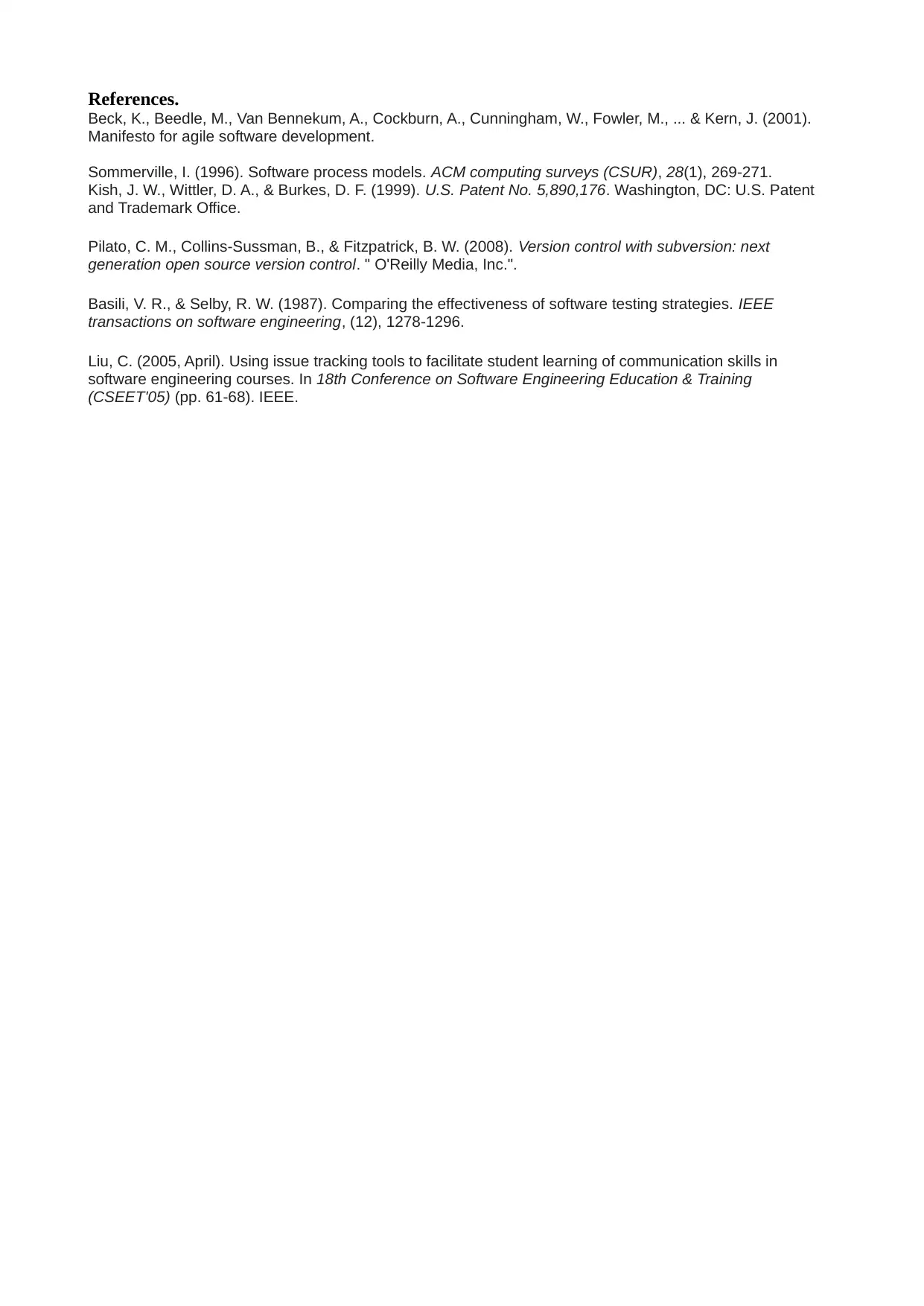COMP1050: Introduction to Software Engineering Assignment 1 Report
VerifiedAdded on 2022/08/24
|2
|711
|44
Report
AI Summary
This report addresses key concepts in software engineering, focusing on the Waterfall model as a sequential approach to software development, where each phase is clearly defined. It contrasts this with the Agile approach, highlighting its benefits such as stakeholder engagement, transparency, adaptability to change, user focus, and timely delivery through sprints. The report also discusses the advantages of version control and issue tracking, including code review, continuous integration, and effective issue management. Finally, it outlines various testing strategies, including unit testing, integration testing, validation testing, and system testing, to ensure software quality and reliability. The report is based on the assignment brief for COMP1050: Introduction to Software Engineering Assignment 1.
1 out of 2








![[object Object]](/_next/static/media/star-bottom.7253800d.svg)